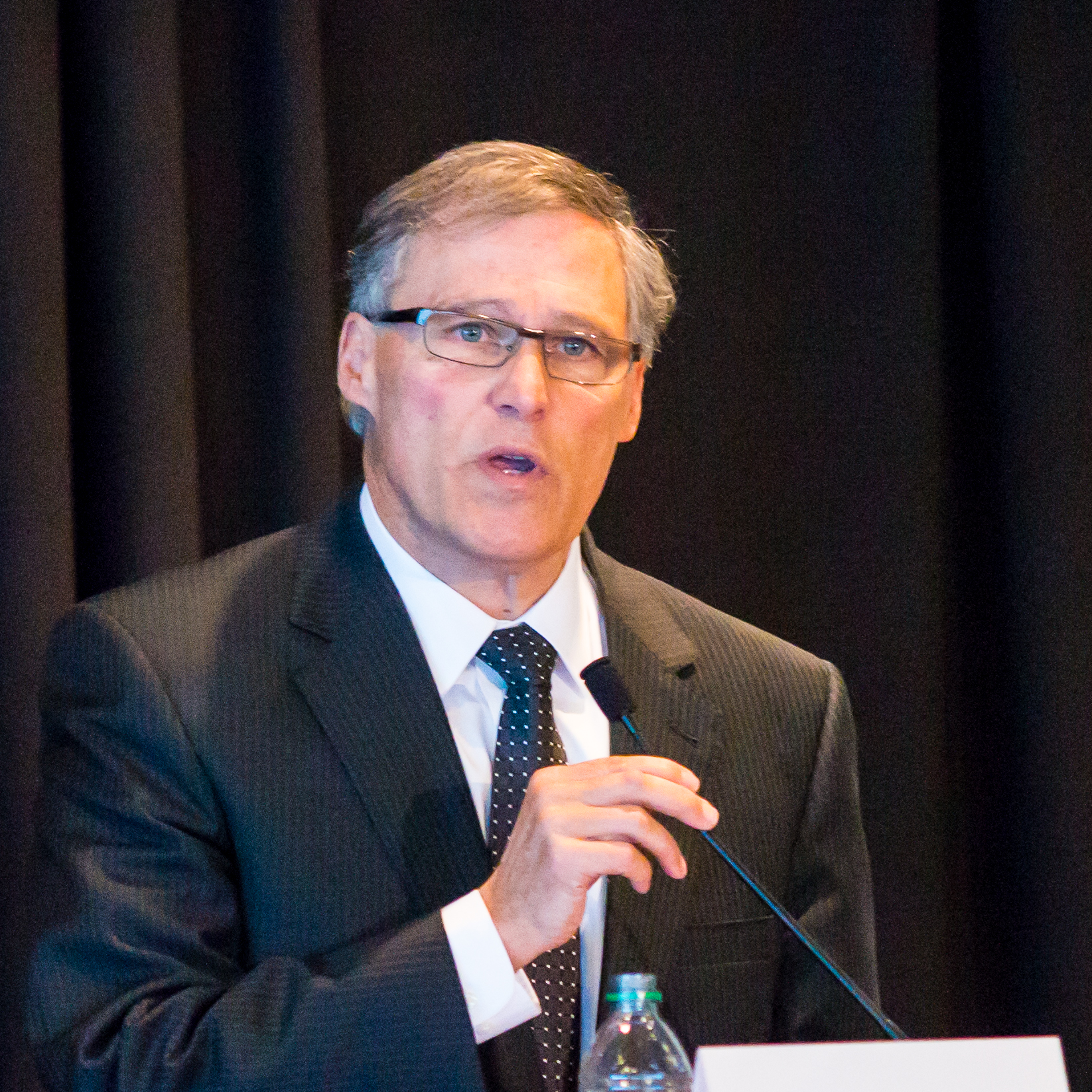
Gov. Jay Inslee’s executive order Tuesday to tackle carbon emissions in Washington is more of a push than a flat-out mandate.
The order created an advisory task force to give him advice by Nov. 21 on preparing his climate change agenda for the 2015 legislative session. And the executive order “asks” various state and regional agencies to research what would be involved with specific potential measures, such as stopping the use of electricity produced by out-of-state coal plants and imposing carbon emissions limits on industry.
On Tuesday, Inslee said the Legislature has failed to act in a timely manner to deal with the problems of increased carbon emissions, which contribute to global warming and increasing acidity in the oceans. The changing climate has detrimental ripple effects on Washington’s shellfish industry, Eastern Washington irrigators and public efforts to prevent and fight wildfires.
“I’m taking executive action because we cannot afford to wait any longer. … We have a sense of where the Legislature is —not ready to act,’ Inslee said at a press session in Shoreline, where the 21-member advisory committee also held its first meeting. Inslee does not expect the committee to reach a consensus. But he wants it to discuss “hard questions” that would come up on any carbon emissions measures in order for him to get feedback.
“We have to be bold. We’re running out of time,” said Renee Klein of the American Lung Association and a member of the new advisory committee.
However, Sen. Doug Ericksen, R-Ferndale and chair of the Senate Energy, Environment & Telecommunications Committee, said Republicans were not given a heads-up about Tuesday’s announcement, which was attended by several Democratic legislators. And he suggested that Inslee handpicked the committee for members who lean toward the governor’s environmental views.
In 2013, a committee of two GOP and two Democratic legislators, including Ericksen, met with Inslee several times, and split 2-2 on almost every major recommendation proposed by either side. The Democrats wanted to install new carbon emission limits plus a cap-and-trade program. The Republicans wanted to study nuclear power and to revoke the requirements for carbon emissions reductions that the Legislature set in a 2008 state law. Ericksen argued Inslee did not like the results from the 2013 committee, so he set up a new task force to get the results that the governor wants.
All this state wrangling was set into motion in 2008, when Washington’s Legislature set a goal of reducing the state’s greenhouse emissions to 1990 levels by 2020, with further trimming of emissions to 25 percent below Washington’s 1990 level by 2035 and to 50 percent below by 2050. So far, nothing has happened. Washington’s carbon dioxide emissions totaled 96 million metric tons of carbon dioxide emissions in 2010. If no new remedial measures are tackled and the state’ population growth continues, state discharges will blast away all the goals for reductions set five years ago.
Inslee cited the non-compliance with the 2008 law as a major reason for creating the new task force.
The task force includes health, labor, tribal and environmental representatives. Its business-oriented representatives are from Puget Sound Energy, Energy Northwest, one public utility district and the state dairy association. The committee does not include representatives form the heavier-hitting business interests in Olympia. The Association of Washington Business is the state’s largest and most powerful business lobbying group — except for Boeing by itself — is not on Inslee’s advisory committee. The AWB strongly opposed carbon emissions limits and cap-and-trade proposals over the past year.
The advisory committee’s co-chairpersons are Ada Healy of Vulcan, a Paul Allen company that is a major economic and political force in Seattle, and Rod Brown of Cascadia Law Group, a noted environmental attorney but also a member of the board of Portland General Electric, Oregon’s largest utility company.
In 2013, the legislative panel’s technical consultant reported that the most potent proposed policy would be to install a cap-and-trade program in which Washington would have an overall annual limit to its carbon dioxide emissions. Limits would be set for specific geographic areas. Firms would obtain rights for specific amounts of emissions in those areas and could trade their rights. A carbon tax, another suggested policy, is simply a levy on a firm’s carbon dioxide emissions, which is supposed to inspire a business to decrease its emissions. Since transportation emissions account for 44 percent of Washington’s carbon dioxide output, requiring lower carbon levels in fuel mixes would also help, the consultant said.